As a kayaking enthusiast, I’ve often found myself pondering about the various rules and regulations that govern this sport. One question in particular that has been on my mind lately is, “Do kayaks need to be registered in Illinois?” I have to admit, in my earlier kayaking days, I wasn’t too concerned about the specifics of legal requirements. However, since then, I have come to understand the importance of being well-informed about all aspects of kayaking, including any necessary paperwork.
To help fellow kayakers, I have decided to delve deep into this subject and provide a comprehensive guide on the various laws that apply to kayaking in Illinois, including registration, safety gear, and more. Join me as I explore the ins and outs of Illinois kayaking laws so you can have a safe and enjoyable paddling experience in the Land of Lincoln.
Contents
Contents
What Is A Kayak?
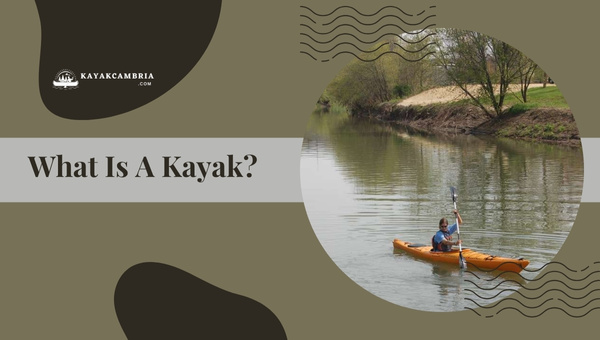
A kayak is a small, narrow watercraft designed for an individual to paddle through waters for recreational or competitive purposes. Traditionally constructed with a light frame and covered with a waterproof material, modern kayaks are usually made with more durable materials such as plastics, fiberglass, or composites.
Kayaking has become increasingly popular for those who enjoy the peacefulness and tranquility of paddling and exploring waterways. It offers an excellent opportunity to connect with nature and provides a great workout, improving cardiovascular health and building upper body strength.
There are several types of kayaks available, including sit-on-top, sit-in, inflatable, and folding kayaks. Each type is designed with specific features that cater to different kayaking needs and environments. With such a wide array of options, there’s a kayak suited for every paddler, be it for calm lakes and rivers, more challenging white-water rapids, or venturing out into the ocean.
Some kayaks are even equipped with a small motor, making it convenient for those looking to go further distances or needing assistance against tides or currents. In certain states, this difference between traditional paddle-powered and motorized kayaks can impact registration requirements – which brings us to the main topic of this article: do kayaks need to be registered in Illinois? Read on to find out more about the state’s kayak and boat registration laws, and the specific requirements for motorized kayaks.
Kayak And Boat Registration Law
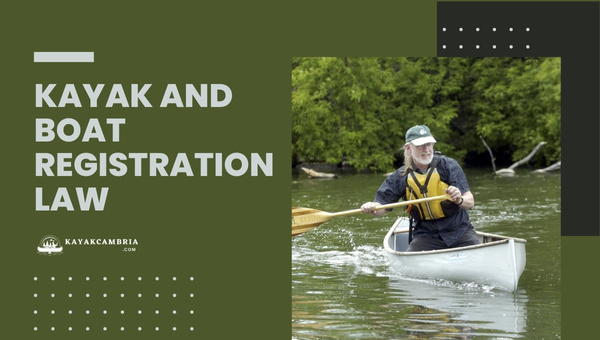
When it comes to kayaking in Illinois, it’s essential to know the laws that govern boat registration in the state. In Illinois, watercraft registration is handled by the Illinois Department of Natural Resources (IDNR). In general, you don’t have to register your kayak or canoe if it is a non-motorized watercraft, making it hassle-free for those engaging in recreational activities.
However, if you plan to install a motor on your kayak, it will be considered a motorized watercraft and thus will require registration. This includes both electric and gas-powered motors.
To register a motorized kayak, you’ll need to complete an Application for Watercraft Certificate of Title and Certificate of Number, pay the required fees, and submit the necessary documents according to the guidelines provided by IDNR. Remember, non-powered kayaks and canoes with no accessories are exempt from registration in Illinois, so you can paddle worry-free without the need for registration!
Motorized Kayak Registration Laws
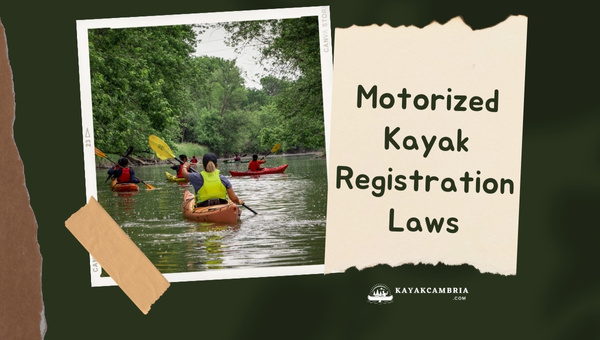
If you’re an avid kayaker in the state of Illinois, motorized kayaks have undoubtedly crossed your mind. After all, they offer the benefits of traditional kayaking while also providing additional functionality through motorization. However, when it comes to the registration requirements, these vessels fall under a separate category. Understanding the applicable laws is essential for those who want to enjoy the best of both worlds without running afoul of the regulations.
In the state of Illinois, motorized kayaks do need to be registered with the Illinois Department of Natural Resources (IDNR). This registration requirement includes both gas-operated and electrically powered kayaks. The registration itself consists of obtaining a unique registration number and a registration card. The registration number must be displayed on both sides of the bow, and the registration card should always be on board when using the motorized kayak.
To register your motorized kayak, you’ll need to complete the Watercraft Registration/Title Application form and pay the required fees. The registration fees vary depending on the length of your kayak, with shorter watercraft having lower fees. Additionally, the registration is valid for 3 years – after which, it must be renewed.
It’s worth noting that if you have a non-motorized kayak and only use it as such, you won’t need to register it in Illinois. Furthermore, if your motorized kayak is already registered in another state, and you are visiting Illinois for less than 60 consecutive days, registration with IDNR is not required.
While non-motorized kayaks do not require registration in Illinois, those adding motors to their kayaks need to be mindful of the state registration laws. A combination of understanding and adhering to these laws will ensure a smooth kayaking experience, allowing you to focus more on exploring the natural beauty of Illinois waterways and less on potential legal complications.
How To Register A Kayak In Illinois: 2024 Step-By-Step Guide

The process of registering a kayak in Illinois is simple and straightforward. Follow the steps below to ensure you are in compliance with Illinois state laws:
- Gather Necessary Documentation: To register your kayak, you’ll need to provide proof of:
- Ownership (Bill of sale or manufacturer’s certification of origin)
- Residency (Driver’s license, State ID, or military ID)
- Complete Application Form: Obtain the Watercraft Registration & Title Application form (Form IL 422-0321) from a local Department of Natural Resources (DNR) office, or download it from the Illinois DNR website.
- Visit Department of Natural Resources Office: Visit your nearest DNR office carrying the completed application form and necessary documentation. They will verify the details provided and process your application accordingly.
- Pay the Registration Fee: The registration fee varies based on the type and length of the kayak. Be prepared to pay the appropriate fee, which can be found on the Illinois DNR Boating Fees page.
- Receive Registration and Title: After your application has been approved and payment has been received, you will receive your kayak’s registration and title. The registration is valid for three years and needs to be renewed thereafter.
- Display Registration Numbers & Decal: Properly display the registration number and decal on both sides of your kayak’s bow, as required by Illinois law. The numbers should be at least 3 inches in height and easily visible from a distance.
Remember, registering your kayak in Illinois is necessary for motorized kayaks and exempt for non-motorized ones. Keeping up-to-date with Illinois boating laws and ensuring compliance will make your time on the water more enjoyable and stress-free.
Kayaking Education Laws In Illinois (2024)
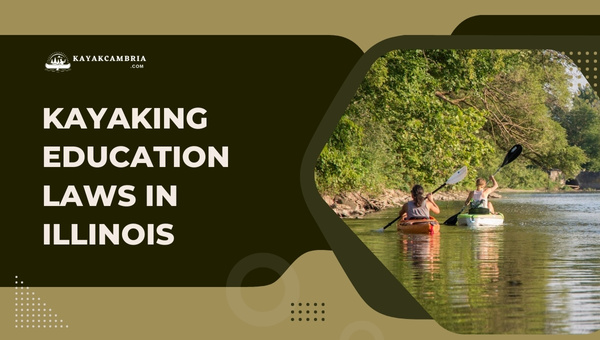
Illinois takes boating safety seriously, so there are several educational requirements in place for operators of watercraft, including kayaks. For starters, anyone born on or after January 1st, 1998, is required to complete a boating safety course accredited by the Department of Natural Resources (DNR) before they can operate any motorized or non-tidal watercraft.
While not always required for kayaks, it’s highly recommended that all paddlers, regardless of experience, take a kayak safety course to improve their knowledge, skills, and overall enjoyment on the water. Many kayaking clubs and outfitters offer such courses, with curricula tailored to suit various skill levels and preferences.
For those who would like to teach kayaking classes in Illinois, it’s imperative to obtain proper certification from the DNR-acknowledged organizations. The American Canoe Association (ACA), for example, is an established organization that offers instructor certification courses for kayak and other paddle sports instruction.
While not mandatory for all kayakers, taking a kayaking safety education course is highly beneficial to ensure a safe and enjoyable experience on the water. Plus, pursuing proper certification is essential for those who wish to teach kayaking professionally in the state of Illinois.
Kayaking Sounding Devices Laws In Illinois (2024)
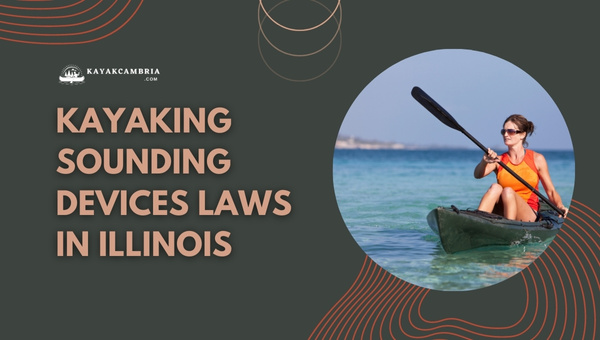
When it comes to kayaking in Illinois, there are certain safety regulations that need to be followed, and one of them is having a proper sounding device while out on the water. In Illinois, it is a legal requirement for all vessels, including kayaks, to carry a sound-producing device. This device could be a whistle, horn, or even a bell, and its main purpose is to signal your presence to other boaters and alert them in case of any possible danger.
Having a sounding device on your kayak is not just about following the Illinois boat safety laws, but it is also a crucial aspect of ensuring safety while enjoying this recreational activity. You never know when an emergency situation could arise, and a functioning sounding device can be your lifeline to signal for help or to warn others in the area.
When choosing a sound-producing device, it’s vital to pick one that can be heard from at least half a mile away and can produce a blast of at least four seconds in duration. Some popular choices for kayakers include airhorns, marine whistles, and even electronic devices that emit loud signals.
In addition to sounding devices, it’s also important to remember other safety regulations and guidelines for kayaking in Illinois. These include wearing life jackets, having proper lighting, and staying informed about relevant local and state boating laws.
Overall, the sounding devices law in Illinois not only ensures your own safety while kayaking but also helps maintain a safe environment for all boaters on the water.
Kayak Life Jacket Laws In Illinois (2024)

When it comes to kayaking in Illinois, one of the most critical safety measures is the life jacket law. According to the Illinois Department of Natural Resources, all water vessels, including kayaks, must have at least one U.S. Coast Guard-approved personal flotation device (PFD) on board for each person.
The life jacket law in Illinois further states that individuals under the age of 13 must wear a life jacket at all times while on a vessel unless they’re below deck or within an enclosed cabin. It is also required that the life jacket should be of an appropriate size and in good condition.
For kayakers, the importance of wearing a life jacket cannot be overstressed. It not only helps prevent tragic accidents but also ensures that you remain safe and protected throughout your kayaking experience. Apart from legal compliance, it is advisable to get acquainted with the proper usage and storage of life jackets. Check for any wear or tear periodically and replace if needed.
In addition to life jackets, it is prudent for kayakers to keep safety equipment like a whistle or other audible signaling devices on board. They are useful in emergencies and can significantly help in rescue operations. Furthermore, being aware of the local weather conditions, water currents, and navigation rules will make your kayaking adventures in Illinois safer and more enjoyable.
Kayaking Lights Laws In Illinois (2024)
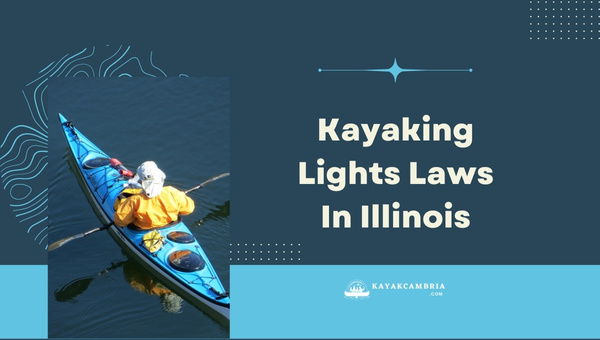
Navigating the waters of Illinois in a kayak, especially during the late hours, may raise questions about the regulations surrounding lighting. Being well-versed in the kayaking lights laws in this state is essential for ensuring a safe experience for both yourself and others around you. In this section, I will outline the key aspects of the lighting requirements for kayaks in Illinois.
One of the crucial things to keep in mind is that the Illinois Department of Natural Resources mandates that all vessels, including kayaks, must display proper lighting when operating between sunset and sunrise. This not only ensures visibility but also helps avoid accidents during periods of limited visibility.
For kayaks, white light is required to be visible from all directions. This can be achieved by either using a 360-degree white light or a flashlight. While the placement of the light is not specifically defined by law, it is highly recommended to position it at the highest point of your kayak. This ensures maximum visibility to other vessels navigating the waters.
In addition to the required white light, it is also a good idea to utilize reflective material on your paddles or other parts of the kayak. This adds an extra layer of visibility while on the water, keeping you and those around you safe.
As a kayaker, you should be aware that failure to adhere to kayaking lights laws in Illinois can result in penalties. Furthermore, by neglecting these regulations, you may unknowingly create a hazardous situation for yourself and others on the water.
Knowing the kayaking lights laws in Illinois is a crucial aspect of planning a safe, enjoyable, and law-abiding kayaking adventure. Remember to equip your kayak with the required white light and adhere to the stipulated guidelines between sunset and sunrise. With the appropriate lighting in place, you’ll be better prepared for a safe and illuminating kayaking experience in the beautiful waters of Illinois.
Kayaking Alcohol And Drug Laws In Illinois (2024)
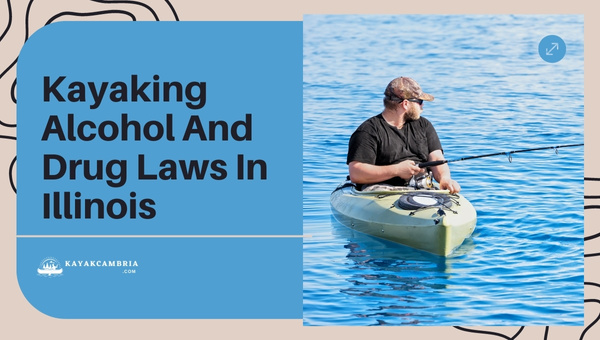
When it comes to kayaking, safety should always be a top priority. Alcohol and drugs can greatly impair one’s judgment and ability to function safely on the water, which is why they are strictly regulated in Illinois. The state’s boating laws treat kayaking under the influence of alcohol or drugs as seriously as driving under the influence (DUI).
In Illinois, the legal blood-alcohol content (BAC) limit for boaters is the same as the limit for drivers, set at 0.08%. However, it’s important to note that even with a lower BAC, you can still face legal repercussions if you appear to be impaired and unable to operate your kayak safely. Anyone found in violation of these alcohol and drug laws can expect to face fines, suspension of boating privileges, and even jail time in more severe cases.
Additionally, it is illegal in Illinois to possess or consume alcohol on any public or private watercraft within a 1,000-feet radius of a public boat launch owned, operated, or leased by the Department of Natural Resources (DNR).
Kayakers and other boaters are encouraged to always be mindful of the effects of alcohol and drugs on their ability to navigate the water safely. To protect yourself and others, it’s best to refrain from consuming alcohol or using drugs while kayaking, ensuring a safe and enjoyable experience for everyone on the water.
Kayaking Fire Extinguisher Laws In Illinois (2024)
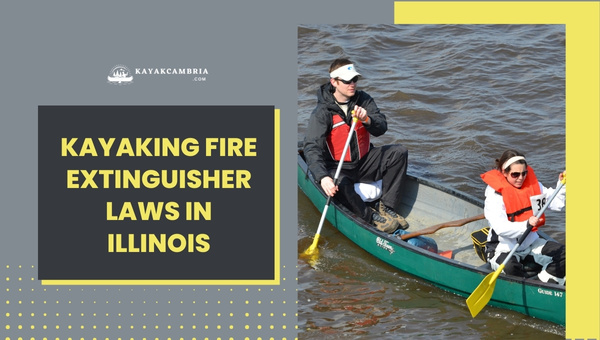
While kayaking in the beautiful waterways of Illinois, safety regulations play a significant role in ensuring a smooth experience. One critical aspect to consider is the requirement of carrying a fire extinguisher on board your kayak.
In Illinois, it is mandatory for all motorized boats to carry a USCG-approved fire extinguisher. However, since kayaks are usually non-motorized or have smaller motors, they are exempt from this requirement. This regulation stems from the reasoning that a non-motorized kayak poses a lower fire risk than larger motorized boats.
In the rare case that your kayak is equipped with a motor capable of producing a significant amount of heat – such as a gasoline engine – you will be required to keep a fire extinguisher on board as a safety precaution. For kayaks with motors, it is crucial to check the specific requirements set by the Illinois Department of Natural Resources to ensure compliance with the state’s laws.
It’s also essential to be proactive about safety during your kayaking adventures. While a fire extinguisher may not be mandatory on a non-motorized kayak, it’s never a bad idea to consider carrying other safety equipment with you, such as life jackets, a whistle, and navigation lights.
Remember, when embarking on a kayaking adventure in Illinois, the number one priority is the safety of yourself and those around you. Familiarizing yourself with the state’s fire extinguisher laws and other safety regulations is crucial for a smooth, enjoyable, and worry-free experience on the water.
Other Kayak And Boating Laws In Illinois (2024)
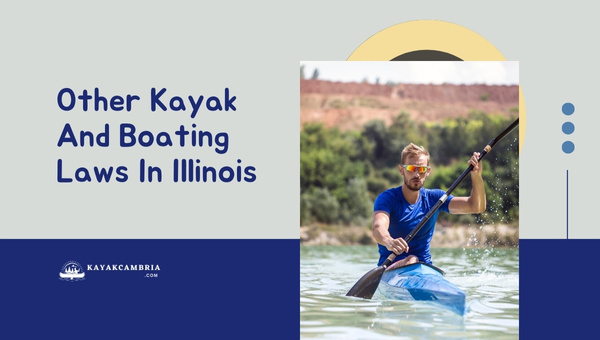
When it comes to kayaking and boating in Illinois, many laws and regulations must be observed. These guidelines provide an organized and structured environment where individuals can enjoy their time on the water safely.
Some of these laws are in place to protect the waterways and the people who use them, while others help prevent mishaps and accidents. Here is an overview of a few other essential kayak and boating laws worth knowing when navigating the waters in the Prairie State.
1. Age Restrictions And Supervision

Illinois has strict regulations regarding the age of individuals operating watercraft. It is essential to understand these laws before taking your kayak out on the water. For instance, no one under the age of 10 may operate a watercraft unsupervised.
Additionally, those between the ages of 10 and 17 are required to complete a boating safety course or be accompanied by a parent, legal guardian or a person at least 18 years old, holding a valid Illinois driver’s license.
2. Slow-no-wake Zones

Within Illinois waterways, some areas marked as “Slow-no-wake” must be observed by all watercraft operators. In these zones, kayaks, boats, and other watercraft must be operated at the slowest possible speed to avoid creating a wake.
These regions are implemented in places like marinas, launch ramps, and along the shoreline, where the wake from speeding watercraft could potentially cause property damage or hazards to other boaters.
3. Use Of Personal Flotation Devices (PFDs)

In addition to life jacket laws, Illinois stipulates that all individuals in a watercraft under 26 feet, including kayaks, are required to have a personal flotation device (PFD) on board for every person. A throwable flotation device must be available for those on boats 16 feet in length or longer.
4. Launching And Docking

Always remember to respect private property and obtain proper permission before launching your kayak or boat from a private location. In public areas, ensure you follow the rules and guidelines provided by the responsible agency or authorities at public launch sites.
5. Reporting Accidents And Collisions

It is mandatory to report boating accidents involving injury, death, or property damage exceeding $2,000 in Illinois. Collisions with other kayaks, boats, or fixed objects in the waterway should also be reported. The accident report must be filed within 48 hours for fatalities or injuries requiring medical attention, and within 5 days for property damage.
While kayaks may not require registration in Illinois, it is crucial to educate oneself and be aware of other kayak and boating laws to ensure a safe, enjoyable, and legal time on the water. It is essential to follow these rules and regulations not only for personal safety but also to respect the environment and other waterway users.
Frequently Asked Questions
1. Do I need to register a non-motorized kayak in Illinois?
In Illinois, non-motorized kayaks, canoes, and paddleboards do not require registration. However, if your kayak is outfitted with a motor, registration will be necessary.
2. How do I register a motorized kayak in Illinois?
To register a motorized kayak in Illinois, you need to visit the Illinois Department of Natural Resources (IDNR) website or an authorized agent to obtain the proper registration forms. You must submit the completed forms along with the required fees and documentation, such as proof of ownership.
3. Are there specific requirements for kayak life jackets in Illinois?
Yes, all kayaks and canoes in Illinois must have a life jacket (also known as a personal flotation device) for every person on board. The life jackets must be in good condition, readily accessible, and of the appropriate size for each passenger.
4. What kind of safety equipment should I carry on my kayak in Illinois?
Aside from life jackets, Illinois law also requires kayakers to carry a sound-producing device, such as a whistle. Additionally, if you’re kayaking at night, your kayak must have lights that can be seen from at least two miles away. Lastly, if you have a kayak with an inboard motor, you must carry a fire extinguisher.
5. Can I drink alcohol while kayaking in Illinois?
Operating a kayak under the influence of alcohol or drugs is illegal in Illinois. Kayakers must abide by the same laws that apply to other watercraft operators.
6. Are there age restrictions or special permits required for kayaking in Illinois?
In Illinois, children under 13 years old must wear a life jacket at all times while on board a kayak, canoe, or paddleboard. Additionally, anyone operating a motorized kayak must have a valid Boating Safety Certificate if born on or after January 1, 1998. You can obtain a certificate by completing a boating safety course approved by the IDNR.
Conclusion
Navigating the registration and safety laws for kayaking in Illinois may seem overwhelming at first. Staying up to date with these regulations is essential for a safe and enjoyable experience on the water. In the end, it’s all about having a safe and enjoyable time on the water.
Whether you’re a beginner or a seasoned kayaker, following these rules and regulations will ensure that you and the people around you enjoy the beauty and thrill of kayaking in Illinois. So go on, grab your paddle and life jacket, and embark on your next kayaking adventure with confidence!

